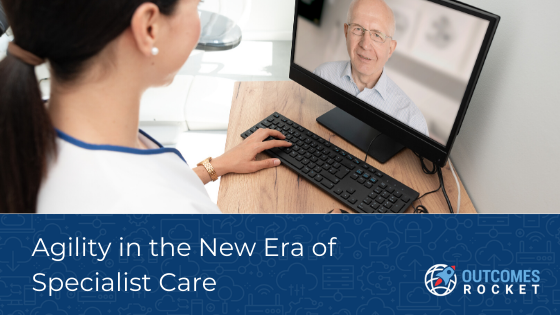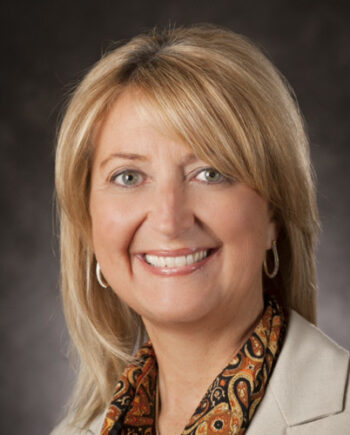
The growing number of technological innovations in healthcare has immensely improved medical efficiency and added value to care. We’ve seen automation in tasks reduce physician burnout, improve the number of lives saved by higher compliance, and reduce the cost thanks to limiting the duplication of diagnostic tests.
Another area in healthcare that has grown rapidly the past five years is telehealth. This is not a surprise as we are almost always online, either scrolling through our phones for emails or checking social media. It should be easy to assume that the adoption and usage of telehealth services have also increased.
According to a 2019 FAIR Health White Paper Analysis on how telehealth is affecting the healthcare landscape, telehealth’s use has grown 1,393 percent from 2014 to 2018. This is based on the growth of 0.007 percent to 0.104 percent of all medical claim lines.1
Though the growth of 0.007 percent to 0.104 percent does seem significant, it’s still low compared to the number of Americans who aren’t using telehealth, especially if you’ll consider the expanded access to care, reduce medical cost, and the possibility of significant savings. Perhaps more Americans are still inclined to do in-patient visits with their physicians.
However, things may change as some states and cities have enforced some form of lockdown to mitigate the impact of COVID-19 as the number of cases and deaths are on the rise. Could this be a tipping point for telehealth in America?
While some businesses are still deciding when to embrace telehealth, an orthopedic specialty group in Georgia has taken the initiative to employ telehealth, with much success.
Spine Center Atlanta, soon to become Envision Orthopedics and Spine, is a state-of-the-art facility that offers treatments from acupuncture and massage to physical therapy and spine surgery. Its headquarters and largest physical facility are in Atlanta, and it also has centers in South Carolina, Florida, Tennessee, and Alabama.
One of Envision’s services is Telemedicine eVisits, where patients can consult with their doctors.
Robbie Allen, CEO at Envision, in our podcast interview, said that they’ve been able to change the way patients think about seeing a doctor. “We’ve been able to change the way that people think about seeing an orthopedist or surgery center. We connect with patients. We’re able to work with, diagnose, interact with, update, and follow up with patients remotely. And we’re able to do that across six centers that are scattered geographically and across the country and even the globe for patients from their homes. Patients, once they adopt this, it tends to give them much more stickiness to their care plan. We’ve even adopted that for physical therapy as well as some things that you don’t often think about. And when you consider surgical patients, the post-op care or the post-op mobility, training and interaction are one of the biggest predictors of success, post or after orthopedic surgery.”
How did they do it?
According to Robbie, two things have enabled Envision to push out the telehealth structurally.
One is that a huge portion of their patients is cash or domestic medical tourism. Those patients don’t have the same regulatory hurdles that would ordinarily prevent them from receiving a more aggressive form of direct patient contact method like telemedicine.
Two, Envision uses EMRs, many of which now have integrated telemedicine.
“There are also third-party platforms like ExamMed. That’s one that we use quite frequently that makes it incredibly easy to interact on a video basis with a patient over a secured and sort of approved channel. Those things combined have allowed this to be an interesting lab to see where the boundaries of what we can do exist.”
Telehealth comes with its own unique set of challenges and benefits.
Among the advantages are easy access to specialists and information, cost and resource savings for payers and providers, and higher patient satisfaction.
Disadvantages include difficulty in reimbursements, cross-state licensure, technology, and possibly low payer utilization of telehealth.
You’re probably asking how the customer type was structured in the model. I also asked the same question.
Robbie answered, “I did not inherit that, but I did inherit the patient mix by and large. Although I will say that the use of widespread domestic and international medical tourism is a growing phenomenon related to increasing deductibles and total cost of care underneath that umbrella amount.”
“I think the early experimentation is that it was a decision consciously to try to serve certain segments of the market that were more cash-oriented, even to the level of something like a membership program. OK, we’ll pay $100 dollars a month. And that kind of gives you certain levels of access to care significantly pre-dating the concierge medicine effect. And again, much like tablets and things like that. I think the practice was probably a little too far ahead of that curve.”
“And so, the patient mix we have today made a conscious choice to avoid the bureaucracy and the high churn rate associated with physically visiting a medical office. There are volumes of 70 percent at Medicare practice which works out to forty-five patients a day per provider. And it is entirely down to the tenth of an RV management. We’ve structured it a little bit differently.”
If your business is struggling, it’s time to implement a new strategy. It’s time to move away from the supply-driven health system and move towards patient-centered care.
One of the areas which Envision is seeing significant success is through their remote capability.
Envision is based in Atlanta, but Robbie said they are getting more patients outside of the area for two reasons.
One is the employer-directed care by large companies like Google and Amazon that offer incentives for employees to go to single points of care.
The other is through direct marketing which is more targeted.
We bring in people from all over the world for that and their word of mouth then trickles out to friends and family. So, the geographic catchment area is theoretically unlimited.” Robbie explained.
There is so much possibility in telehealth. It holds significant promise as a way of delivering quality healthcare. This could be the time for you to start considering adopting a business model with telehealth.
Listen to my full interview with Robbie Allen here.
Discover more stimulation conversations with other thought leaders at https://outcomesrocket.health/
According to the 2020 Centers for Disease Control and Prevention report, roughly 34.2 million Americans have diabetes,...
Read MoreAs a farmer, Rod was used to long days. He worked 18 hours a day, 7 days...
Read MoreWith investors receiving hundreds of pitch decks every year, how do you create a compelling presentation that...
Read More
Brittany Busse Co-Founder, President, and Chief Medical Officer at
ViTelHealth


Stephen Thorne Founder and CEO at
Pacific Dental Services

Keith Carlson Nurse Career Coach